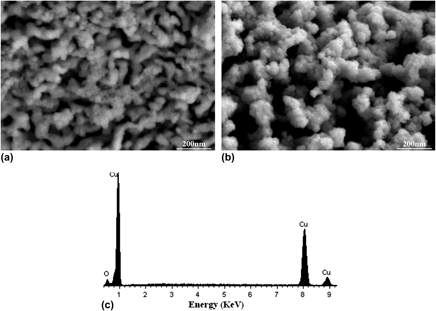Crossref Citations
This article has been cited by the following publications. This list is generated based on data provided by
Crossref.
Zhang, Faming
Li, Ping
Yu, Jin
Wang, Lili
Saba, Farhad
Dai, Ge
and
He, Siyuan
2017.
Fabrication, formation mechanism and properties of three-dimensional nanoporous titanium dealloyed in metallic powders.
Journal of Materials Research,
Vol. 32,
Issue. 8,
p.
1528.
Liu, Huan
Wang, Xinlu
Wang, Jinxian
Xu, Hang
Yu, Wensheng
Dong, Xiangting
Zhang, Hongbo
and
Wang, Limin
2017.
High electrochemical performance of nanoporous Fe3O4/CuO/Cu composites synthesized by dealloying Al-Cu-Fe quasicrystal.
Journal of Alloys and Compounds,
Vol. 729,
Issue. ,
p.
360.
Tian, Lusha
Guo, Yongchun
Li, Jianping
Wang, Jianli
Duan, Hongbo
Xia, Feng
and
Liang, Minxian
2018.
Elevated re-aging of a piston aluminium alloy and effect on the microstructure and mechanical properties.
Materials Science and Engineering: A,
Vol. 738,
Issue. ,
p.
375.
Tian, Lusha
Guo, Yongchun
Li, Jianping
Xia, Feng
and
Yang, Wei
2018.
Nanophase formation during the heat treatment of Al-13Si-5Cu-2Ni-1Mg alloy and the abnormal enhancement of its tensile properties.
International Journal of Materials Research,
Vol. 109,
Issue. 10,
p.
964.
Luo, Z.
Xu, J.C.
Yuan, B.
Li, H.
Hu, R.Z.
Yang, L.C.
Gao, Y.
and
Zhu, M.
2018.
A novel 3D bimodal porous current collector with large interconnected spherical channels for improved capacity and cycling stability of Sn anode in Li-ion batteries.
Materials Letters,
Vol. 213,
Issue. ,
p.
189.
Ma, Hailan
Zhao, Bingge
Ding, Kai
Zhang, Yuanheng
Wu, Guanzhi
and
Gao, Yulai
2020.
Influence of dealloying solution on the microstructure of nanoporous copper through chemical dealloying of Al75Cu25ribbons.
Journal of Materials Research,
Vol. 35,
Issue. 19,
p.
2610.
Chen, Tianxiong
Liu, Xue
Zhao, Ling
Hu, Liwei
Li, Jinfeng
Qu, Fengsheng
Le, Guomin
Qi, Li
and
Wang, Xiaoying
2020.
Investigation on the two-stage hierarchical phase separation in the laser cladded Cu–Mn–Fe coating.
Vacuum,
Vol. 176,
Issue. ,
p.
109331.
Jia, Zhe
Nomoto, Keita
Wang, Qing
Kong, Charlie
Sun, Ligang
Zhang, Lai‐Chang
Liang, Shun‐Xing
Lu, Jian
and
Kruzic, Jamie J.
2021.
A Self‐Supported High‐Entropy Metallic Glass with a Nanosponge Architecture for Efficient Hydrogen Evolution under Alkaline and Acidic Conditions.
Advanced Functional Materials,
Vol. 31,
Issue. 38,





